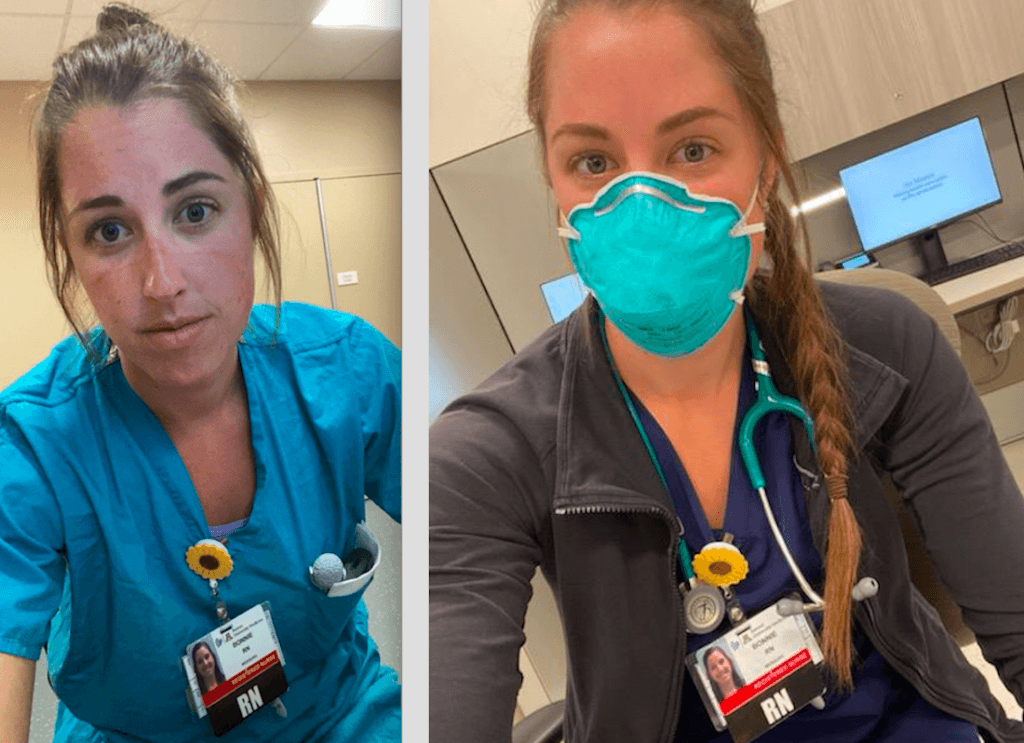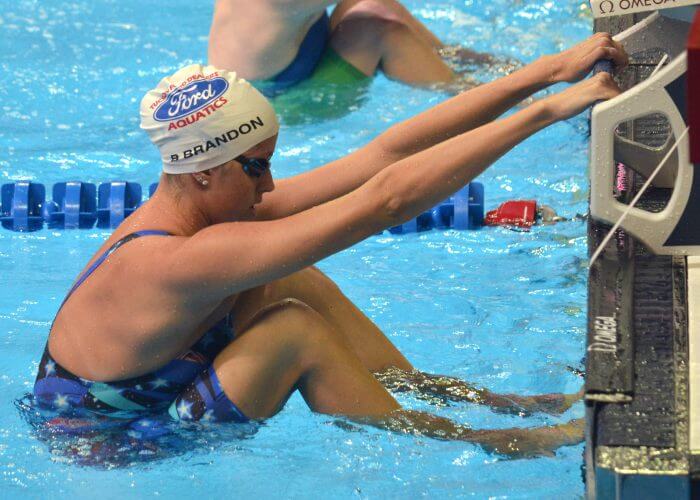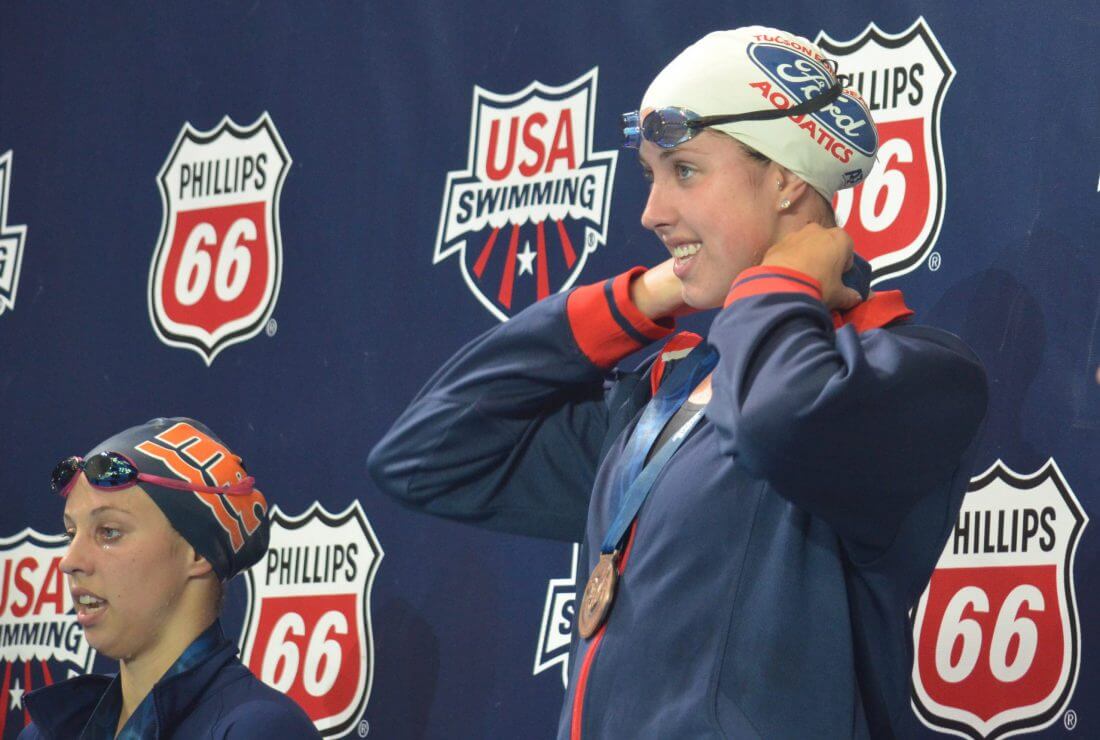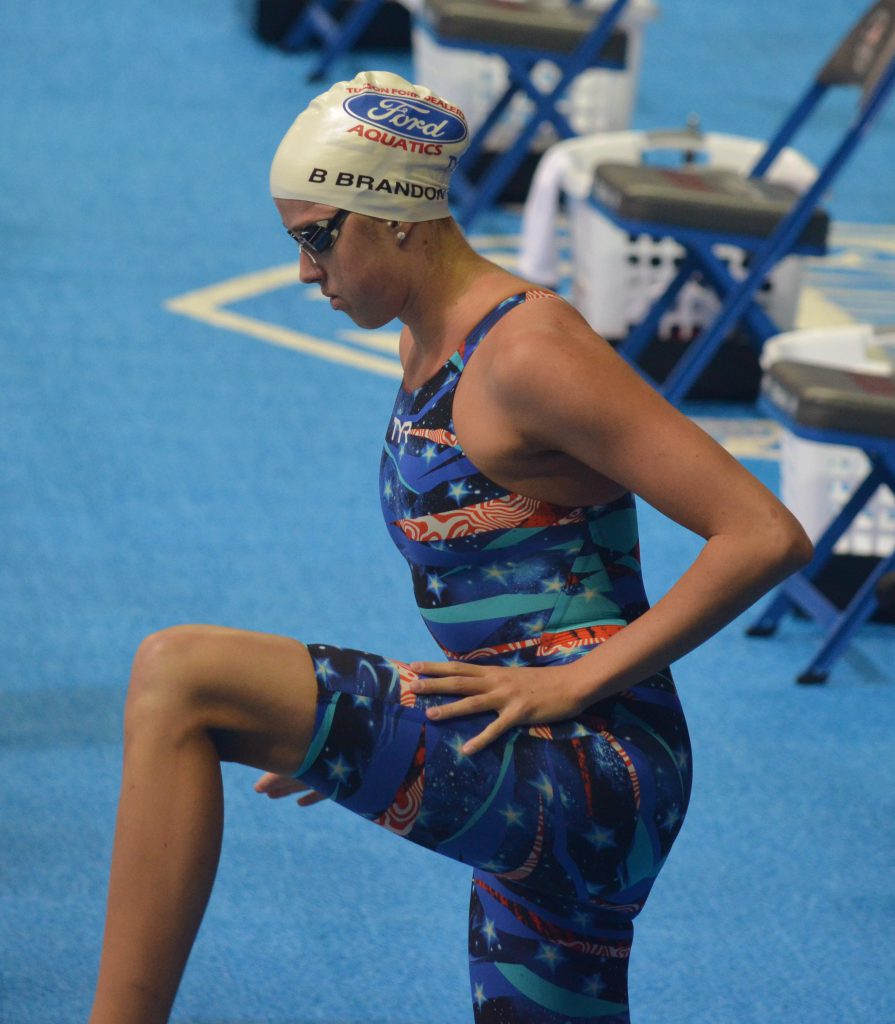Former Team USA Swimmer Bonnie Brandon Shares Perspective as COVID-19 Unit Nurse

Bonnie Brandon was used to swimming in the fast lane.
The former Team USA member and short-course worlds silver medalist was one of the top backstrokers in the world during her career.
Now, she is still in the fast lane, but this time on the front lines as a nurse serving in the COVID-19 unit in Tucson, Arizona.
Brandon went into nursing because of the care nurses gave to her grandfather. She knew she wanted to help people on those front lines, but being there for a pandemic was an intensity she didn’t expect.
“My mom was blown away with the care the nurses gave her dad, and that is why I wanted to be a nurse,” Bonnie Brandon told Swimming World. “I wanted to give that care and compassion to my patients and their families. But I can’t do that during COVID. That has been hard. The big thing for COVID nurses is the fatigue from all of the procedures that go along with everything to make sure we aren’t spreading it.”
It gave her a greater appreciation for what people across the country could, and should do to keep the virus from spreading.
“It is frustrating to me that people aren’t taking this seriously enough. That is part of the problem,” Brandon said. “The only solution is if we try altogether. I don’t know if masks are the solution, but we won’t know unless we all try it. People going against things to rebel or to be political, that shouldn’t be how it is. These people are dying, and people are talking to me trying to tell me it is just a bad flu. They don’t see these people dying like we do. They are drowning in their own secretions because their lungs are filling up with fluid. That is so hard to have people on the outside not take that seriously. I try to respect everyone by wearing a mask all the time. Give them their 6 feet and wear a mask because maybe they have a grandparent that they see on a regular basis. That respect isn’t there across the country, and it is very hard. This is what the officials that know more than us are saying, so we should follow that.”
Brandon, a six-time All-American at the University of Arizona who graduated in 2016, works at the Banner University Medical Center. She retired from swimming after the 2016 Olympic trials.
She was a cardiothoracic progressive care nurse before moving to cardiovascular.

2016 trials. Photo Courtesy: Dan D’Addona
“It really shows how important time is with family and friends,” she said. “That was something completely lost in the pandemic. There were no visitors, these people were just dying alone. That was the hardest part for me, to see all of these people die alone — no family or friends, just people with scary masks looking at them, saying there was nothing they could do, when they were pretty healthy the week before. It happens very quickly, and that is not normal. They are very, very sick if they are in the hospital, and they really don’t get better. Once you are sick enough to be in the hospital, you are probably not coming out.
“Even if they didn’t have COVID-19, there are still people dying alone. Maybe they have cancer and because of the virus, they have to leave the world by themselves. That was so hard to see. People need to be so appreciative of time they can spend with their families, even if that is through Zoom or Face Time.”
Brandon and her colleagues knew it was going to he a monumental change, but it didn’t happen right away.
“As soon as it hit, it was actually really slow,” she said. “We were hearing about cases around the country but we didn’t have any admissions. We were all getting ready for a pandemic influx of patients, but there weren’t any (at first). We started to get some positive cases and we dedicated a whole unit to our COVID patients.”
Designated nurses, including Brandon, were then assigned to the COVID-19 wing, as hospitals around the country scrambled to figure out the best ways to keep patients and staff safe.

Bonnie Brandon Photo Courtesy: Dan D’Addona
“The nurses on that unit just took over COVID care,” she said. “It took weeks for us to figure out the policies with isolation. It was a big learning curve for everyone because things were changing daily. It started with wearing a cloth mask in COVID rooms, then we added face shields, then it was n95 masks. So there were times when we just had cloth masks and our gowns (over scrubs) on.”
Then it was determined that wasn’t enough.
“We had to wear personal protective equipment, which is now N95 masks, face shields, gloves, gowns over your scrubs, shoe covers,” Bonnie Brandon said. “It is really time consuming to have to change all of that every time we left a room. We had to drop things off near their door. They didn’t want us being in the room for longer than we had to. Doctors would talk to patients through the door on the phone. It was very weird. Doctors couldn’t go in and see symptoms, it was all up to the nurses.”
In addition to their normal duties, the nurses had to change the linens, do the baths, prepare patients for transport, and everything else they usually had help with, but could not because of the virus.
“It is crazy how many jobs you don’t realize other people do for patient care until you have to do them all,” Brandon said. “It was a lot of work.”
Then when emergencies happened, everything seems to go in slow motion.
“It took you at least 30 seconds to put everything on and go back in,” she said. “Every time you go in a room, you need a gown over your scrubs, an n95, your face shield, gloves and caps to cover your hair and shoe coverings. And you have to take that all off when you come out, then you wash your hands, put new gloves on, take off your face shield and wipe it off, put it in your bag, then if you have to go back in, you have to get a new gown, new gloves, put your mask back on and your face shield. Sometimes, you go in and out of a room 20 times in a day, it seems like. That was the frustrating part.”
Then there is simply the fear of getting COVID-19.
“It differed from nurse to nurse, but some people were really scared or worried,” Bonnie Brandon said. “There was a lot of fear and uncertainty, especially when you went into a positive COVID room. That was the scariest part, when you have your first exposure. Then you have to monitor yourself and you start freaking out about every little thing. It subsides, but then complacency unfortunately sets in, and that is a big thing to try to avoid, too. Everything is so tedious.”

Photo Courtesy: Dan D’Addona




Thank you Brandon! You are an inspiration! … and you thought getting to the Olympics took focus …?
Keep up the Spirit! Ed (nephew to a HS Swim Coach)
Bonnie, SO PROUD of you. Keep The Faith
Keep The Faith  LVU
LVU 